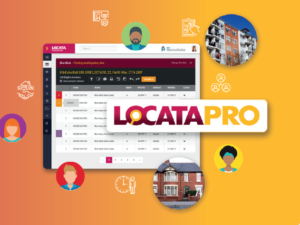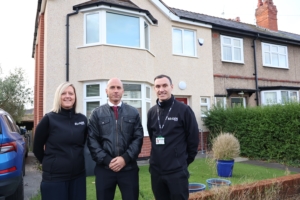FRC Group: What do we offer?
We are FRC Living and we’re experts in providing durable, compliant and fire-retardant furniture, white goods, and accessories for all types of social housing.
Whether its hostels, resettlement properties, temporary accommodation, next steps housing, furnished tenancies, supported housing, market rented properties or key worker accommodation, we can help.
Key services include:
- Contract furniture supply: We supply all kinds of furniture, white goods and accessories. We deliver nationwide, with core items supplied within five days – and all items are warrantied in social housing settings.
- Project management: Let us handle installation from start to finish. We can support housing projects of any size, budget, or timeline, with all furniture installed in-situ and all packaging removed for recycling.
- Starter packs and accessories: From kitchen utensils and cookware to bed linens and toiletries, we provide everything residents need to feel at home from day one.
- Long-term support: We offer ongoing assistance to help landlords maintain high accommodation standards and minimise relet times.
FRC Living is all about making things easier so landlords can focus on core activities. Simply place an order, and we’ll do the rest.
We are Buckingham Interiors and we’re passionate about creating beautiful and functional living spaces.
We specialise in high-quality interior design, bespoke furniture, and accessories for independent living, sheltered living, and extra care housing.
Here’s what we offer:
- Interior design: Our sector-specific design services blend style, comfort, and aesthetics with practical solutions that cater to the diverse needs of residents, including dementia specifications and dementia friendliness.
- Project consultation and management: We’re with you every step of the way on new builds or refurbishments. Working closely together, we deliver design-led interior solutions with packages tailored to your project’s unique needs.
- Furniture supply and installation: We provide high quality, fire regulation compliant furniture, accessories, artwork, and window coverings, all delivered and installed according to your floor plan.
When you choose Buckingham Interiors, you’re tapping into 30 years of experience in design-led furnishings. We’re all about combining comfort, style, and practicality to create living spaces that people love to be in.
We are Furniture Flex and we’re here to help landlords tackle the challenges of providing furnished tenancies.
We offer everything needed to turn a house into a home—from furnishings and white goods to appliances and everyday essentials like utensils and bedding—all through flexible, cost-neutral options. Our innovative packages let you choose between rental, purchase, or a mix of both.
Offering furnished tenancies can deliver many benefits, including:
- Lower tenant turnover
- Reduced void losses from vacant properties
- Reduced rent arrears
- Better tenant engagement
- Increased demand for hard-to-let properties
Furniture Flex also partners with End Furniture Poverty, using their extensive research to create solutions that help landlords set up furnished tenancies and help tenants escape furniture poverty.
We are End Furniture Poverty, and we are the campaigning and social research arm of FRC Group.
Launched in 2015, the initiative was created to raise national awareness of the issue of furniture poverty and to develop scaled solutions to drive change.
Our research helps us dig deep into the causes and impacts of furniture poverty, so we can create evidence-based solutions. We use these insights to fuel campaigns across the social housing sector and lobby local and central governments to improve furniture provision.
Some of our current campaigns include Make a House a Home, which calls for at least 10% of social homes to be furnished, and our ongoing efforts to secure long-term, ring-fenced funding for local authority crisis schemes.
We work closely with a wide range of partners and stakeholders to ensure furniture provision is widespread and accessible. We’re also key players in broader efforts to tackle poverty. We provide ongoing support to social landlords, charities, local authorities, and others to help them set up furniture schemes, making sure everyone has access to the essential items they need for a secure life.
Together, we can End Furniture Poverty.
For more information visit https://frcgroup.co.uk











